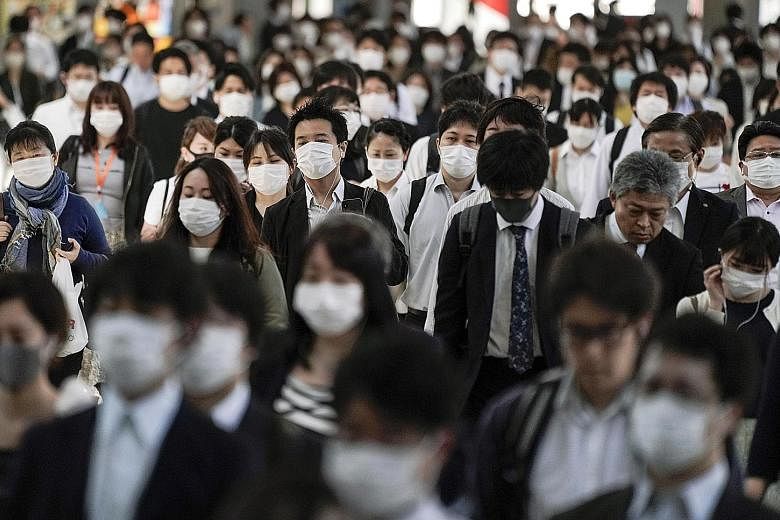Japan lifted its state of emergency in 39 out of its 47 prefectures yesterday, ahead of the planned expiry on May 31, following a sharp drop in new Covid-19 cases nationwide.
Prime Minister Shinzo Abe told a news conference that the emergency decree, first made on April 7, may be lifted in the remaining eight regions as soon as next Thursday, after another expert panel review.
These eight are Tokyo, Kanagawa, Saitama, Chiba, Osaka, Kyoto, Hyogo and Hokkaido. They are home to about 59 million people, or 46.8 per cent of Japan's population of 126 million.
Yesterday's move comes as the number of new cases fell from a peak of 700 to about 100 a day. There were 99 new cases as at 8pm, including 32 in Kanagawa and 30 in Tokyo, bringing the overall tally to 16,202 cases, with 712 deaths.
Mr Abe, however, warned people against letting their guard down, saying he will declare another state of emergency should Japan encounter a surge in cases.
"The scariest scenario is if we immediately go back to how things were like before, leading to a rapid rise in the number of infections," he said, citing a resurgence in infections in Singapore and South Korea as lessons for Japan.
Mr Abe added: "Guidelines cannot reduce the risk to zero, and even after the lifting the emergency declaration, I want everyone to understand that they are living with the virus, and take steps to control the risk of getting infected while trying to regain the rhythm of everyday life."
In doing so, he urged everyone to adopt a "new lifestyle" by easing their way into normalcy. Among other things, unnecessary human contact and travel outside prefecture borders are still discouraged.
He urged companies to build on the momentum of positive change that has taken root during the pandemic, including teleworking and staggered work hours that have led to emptier trains at rush hour.
"We need to contain the spread of the virus, but this is an immense challenge for which everyone must act and cooperate," he said. "It will take a lot of trial and error - nobody in the world has a solution and it is going to be a long road ahead."
Mr Abe vowed to provide more firepower to bolster an economy that is at risk of recession by compiling a second emergency package by next month.
This is on top of the record 117.1 trillion yen (S$1.6 trillion) stimulus that had included cash payouts of 100,000 yen to every resident and up to two million yen for small and medium-sized enterprises.
The new package will include payouts of 100,000 yen to students whose part-time work income has decreased, and 200,000 yen to students in low-income households.
Japan's battle against Covid-19, with its cluster-based approach, has left experts worldwide perplexed as to the efficacy of the strategy. Some critics argue that it has not done enough tests to get a proper grasp of how widespread the coronavirus is.
But others contend that the low number of deaths is proof enough that the strategy has worked, while the containment of the virus has been helped by long-established customs of wearing masks and bowing instead of handshakes.
"I wouldn't say that Japan's way has been perfect, but to be fair, the death rate and the reduction in new cases are evident outcomes of both political initiatives and also social norms," said Dr Kazuto Suzuki, professor of public policy at Hokkaido University.

